Dental implant removal is a crucial topic that many individuals may not initially consider when opting for this dental solution. While dental implants offer a long-lasting and effective way to replace missing teeth, there are instances where removing dental implants becomes necessary due to complications. Issues such as infection, misalignment, or excessive tissue growth might prompt your dentist to recommend the removal of the implant. Understanding the dental implant procedure and the reasons behind dental implant complications helps patients make informed decisions about their oral health. If removal is deemed necessary, your dentist may suggest reinsert dental implants after addressing the underlying issues to restore functionality.
When we talk about the extraction of dental implants, it’s essential to recognize it by various terms like implant removal or retrieval. These terms refer to the process of taking out a dental fixture that has been surgically installed to replace lost teeth. Whether due to complications such as dental implant issues or a need for adjustment, the removal can be a significant step in the restoration process. Alternatives to extraction can include realignment or replacement procedures, emphasizing the importance of consulting with a skilled dental professional to determine the best course of action. This topic not only addresses the necessity of implant removal but also highlights the broader spectrum of dental restoration and the importance of maintaining oral health.
Understanding Dental Implant Removal
Dental implant removal refers to the process in which a dentist dislodges an implant from a patient’s mouth. Although dental implants are designed to be a long-lasting solution for missing teeth, there are situations where their removal might be necessary. These situations can range from complications like infections or allergies to mechanical failures such as a broken screw. It’s important for patients to understand that while dental implants are a permanent fixture, their removal is often feasible and might be the best course of action depending on the circumstances.
Moreover, the skill of the dentist plays a crucial role during the dental implant removal procedure. If there are issues with an existing implant, such as improper positioning or pain, it becomes essential to assess the situation closely before proceeding with removal. This step ensures that any complications are addressed in a timely manner, minimizing potential discomfort and subsequent implant-related issues. Patients should consult with their dentists about the signs that indicate the need for removal, as early intervention can lead to better outcomes.
Why Might a Dental Implant Need to Be Removed?
There are several reasons a dental implant may need to be removed. One of the primary concerns is infection. If bacteria invade the site around the implant, it can lead to peri-implantitis, which can severely compromise the integrity of the implant. In such cases, dentists usually recommend removal followed by appropriate treatment to address the infection. This crucial step helps to prevent further complications that could arise from untreated infection, emphasizing the importance of regular dental check-ups post-implant placement.
Another reason for implant removal could be mechanical issues, such as breakage of the implant screw. If the implant screw becomes loose or fails, reinstallation may be necessary, including the potential for complete removal of the implant. Additionally, misalignment or excessive tissue growth around the implant site can cause discomfort, prompting the dentist to look into removal options to correct these issues. Understanding these reasons helps patients appreciate the complexities of dental implant procedures and the importance of monitoring for any signs of complications.
The Dental Implant Removal Process Explained
The first step in the dental implant removal process involves careful assessment and planning by the dentist. This may include imaging techniques such as X-rays or 3D scans to understand the positioning of the implant, surrounding structures, and any potential complications. An informed plan is essential for a successful removal, ensuring that no additional damage is done to the surrounding tissues, nerves, or adjacent teeth during the procedure.
After planning, the dentist will administer local anesthesia to numb the area around the implant. Once the patient is comfortable, a small incision is made to expose the implant. Depending on how well the implant has integrated with the bone, different instruments or even laser methods may be used to extract the implant. Cleaning the area post-removal is crucial to remove any debris and prevent infection. Finally, the dentist will close the incision with stitches, providing aftercare instructions to facilitate proper healing.
Potential Complications After Dental Implant Removal
Following the removal of a dental implant, patients may experience some discomfort and soreness at the extraction site. This is normal but can vary in intensity based on how long the implant had been in place and the reason for its removal. Patients are often advised to manage pain with over-the-counter medications and to follow their dentist’s instructions closely to avoid complications such as infection.
Another complication that can arise post-removal is bone loss in the area where the implant was situated. Dental implants encourage bone growth, but if they are removed prematurely or due to complications, it may affect the surrounding bone structure. Dentists may recommend bone grafting or other procedures to preserve the structure of the jaw and facilitate successful future implant placements if needed.
What to Expect During Dental Implant Removal
Patients should know that the dental implant removal process, though it may sound intimidating, is a common dental procedure typically performed under local anesthesia. Most patients will be awake during the procedure but will not feel pain thanks to the anesthesia. Dentists aim to make the process as smooth as possible, often employing various techniques to ensure a quicker recovery and minimal discomfort.
Post-procedure, patients can expect to receive thorough aftercare instructions which may include recommendations for diet and activities to avoid for the next few days. It’s important to follow these instructions carefully to promote healing. Additionally, follow-up appointments may be necessary to check on the healing process and determine if any further action, such as a new implant or other restorative options, is needed.
Signs It’s Time for Dental Implant Removal
Recognizing the signs that may indicate the need for dental implant removal is critical for maintaining overall oral health. Symptoms such as persistent pain or discomfort around the implant site could signal underlying issues, including infection or implant failure. Patients should also look out for any signs of swelling, redness, or pus around the gums, which can indicate an infection that needs urgent attention.
Another indication that removal may be necessary is the movement or looseness of the implant. If an implant is misaligned or causing damage to surrounding teeth, it may need to be removed and repositioned or replaced. Regular dental visits are essential to monitor implant health and catch any emerging issues early. Patients should not hesitate to reach out to their dentist if they notice any concerning symptoms.
Cost Considerations for Dental Implant Removal
Understanding the financial implications of dental implant removal is essential for patients. The cost of the removal procedure can vary significantly based on several factors, including the complexity of the case, whether anesthesia is required, and the dentist’s experience. Dental insurance might cover part of the costs, especially if the removal is due to medical necessity, such as infection or damage to the implant.
In addition to the removal costs, patients should also consider potential additional expenses for follow-up treatments, such as bone grafting or new implant placement if needed. A thorough discussion with the dentist about these financial aspects can help patients plan accordingly and avoid any unexpected costs related to the removal and subsequent procedures.
Aftercare Tips Following Dental Implant Removal
After dental implant removal, appropriate aftercare is crucial for smooth recovery. Patients are typically advised to rest for at least 24 hours post-procedure and to avoid strenuous activities that might disrupt healing. Consuming soft foods and staying hydrated can also enhance the comfort and healing process during recovery.
Maintaining oral hygiene is vital following the removal but should be approached with caution. Patients should follow their dentist’s guidelines for brushing and rinsing to prevent infection while ensuring the area heals properly. Keeping the mouth clean helps prevent complications and promotes quicker recovery, making it essential to adhere closely to the provided aftercare instructions.
Reinserting a Removed Dental Implant: Is It Possible?
In many cases, a removed dental implant can be reinserted, but certain conditions must be met. For instance, if the removal was caused by mechanical failure rather than infection or other complications, it may be feasible to place the implant back in its original position. However, careful evaluation by a dentist is necessary to determine if the surrounding bone and gum tissues are healthy enough to support reinsertion.
If the implanted area has experienced any degradation or if periodontal disease is present, a more comprehensive treatment plan may be required before considering reinsertion. This could include bone grafting or other restorative procedures aimed at preparing the site for successful reimplantation. Consulting with an experienced dentist is the best way to navigate the complexities of reinserting a removed dental implant and ensuring optimal outcomes.
Can All Dental Implants Be Removed?
Not all dental implants are created equal, and thus not every implant can be removed with ease. Factors such as the materials used, the complexity of the surgical process, and how well the implant has integrated with the bone can affect the removability of an implant. Some implants might be designed to be removable, but others might require more intensive surgical intervention due to biomechanical factors or issues affecting the surrounding tissues.
It’s essential for patients to have thorough discussions with their dentist regarding the specific type of implant they have, potential removal options, and the overall treatment plan. Understanding these nuances gives patients a clearer picture of their dental health and empowers them to make informed decisions about their oral care.
Frequently Asked Questions
Can a dental implant be removed if necessary?
Yes, a dental implant can be removed if necessary. This may be due to issues like misalignment, infection, or damage. It’s important for your dentist to evaluate the situation to decide if removal is the best option.
How easy is removing dental implants?
The ease of removing dental implants varies based on how long they have been in place and how well they have integrated with the bone. Early removal can be simpler, while long-term implants may require more complex procedures.
What are common reasons for dental implant removal?
Common reasons for dental implant removal include damage to the implant, harm to surrounding teeth, excessive tissue growth, persistent pain, allergic reactions, and infection. Identifying the underlying issue is critical for your dentist.
How is a dental implant removal procedure performed?
A dental implant removal procedure involves assessment and planning, administration of local anesthesia, making an incision, using specialized tools to extract the implant, and cleaning the area before stitching it closed.
Can a removed dental implant be reinserted?
Yes, in many cases, a removed dental implant can be reinserted, provided that the surrounding tissue is healthy. Your dentist will assess the implant and surrounding conditions to determine the best course of action.
Is every dental implant removable?
Not every dental implant is designed to be removable. While some implants may allow for easier removal, others may require complex procedures due to their integration with the jawbone or surrounding structures.
What happens after a dental implant is removed?
After a dental implant is removed, you may experience discomfort in the area. Your dentist will provide care instructions, and it’s essential to follow them to ensure proper healing and manage any pain.
Can damage to a dental implant necessitate its removal?
Yes, if a dental implant becomes damaged due to an impact or other reasons, removal may be the best option to prevent further issues and allow for a replacement or alternative treatment.
What should I consider before dental implant removal?
Before dental implant removal, consider the time since placement, the condition of surrounding tissues, and the complexity of the procedure. Your dentist will conduct a thorough assessment to ensure a safe removal process.
Could infection lead to dental implant removal?
Yes, infection is one of the most common reasons for dental implant removal. If an infection develops around an implant, it can compromise its integrity and may necessitate its removal to prevent further complications.
| Key Points | Details |
|---|---|
| Removal Possibility | Implants can be removed if necessary. |
| Reasons for Removal | Damage, alignment issues, excessive tissue growth, pain, allergic reactions, and infection. |
| Procedure Complexity | The complexity of removal varies based on time elapsed and condition surrounding the implant. |
| Anesthesia | Local anesthesia is used to numb the area before the procedure. |
| Post-removal Care | Follow dentist’s instructions for proper healing, avoiding hard foods, and managing pain with medications. |
| Removal vs. Retrieval | Retrieval must occur within 48 hours; removal involves different complexities. |
| Reinserting an Implant | In many cases, a removed implant can be reinserted after proper assessment. |
Summary
Dental implant removal is a procedure that may be necessary under certain circumstances. Although dental implants are designed to be lasting solutions for tooth loss, there are instances such as damage, pain, or infection that may require their removal. Understanding the reasons behind dental implant removal and the process involved is crucial for patients considering this treatment option. After removal, patients should adhere closely to their dentist’s guidance to ensure a smooth recovery. Always consult with an experienced dentist if you have concerns regarding your dental implants.


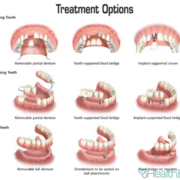
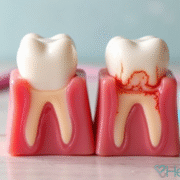
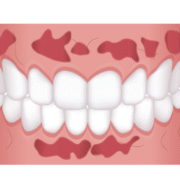
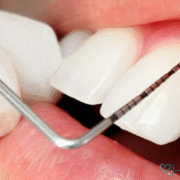
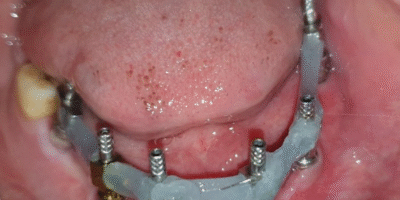
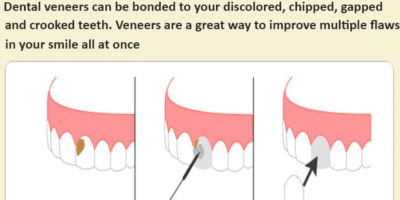
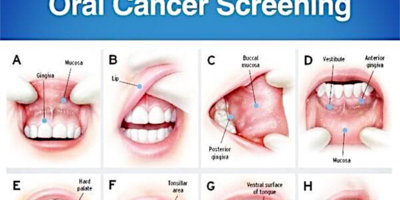

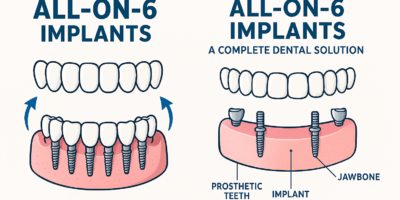
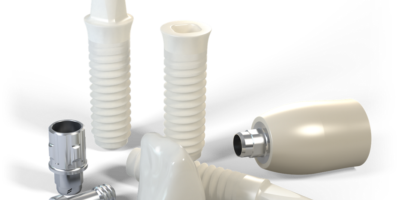




Comments